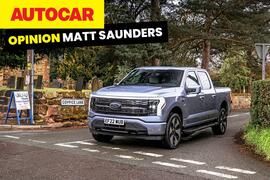 The BIK tax 'loophole' that has driven pick-up truck sales will come to an end in spring
The BIK tax 'loophole' that has driven pick-up truck sales will come to an end in spring
The automotive industry’s repeated cries for ‘more carrot’ from the UK government to drive the stalling adoption of electric vehicles have so far fallen on deaf ears.
All it has had – since the old plug-in car grant was abolished back in 2022, really – is stick.
Fines threatened for manufacturers that don’t sell enough EVs (currently ‘under review’, of course) have driven big discounting and now, for company car drivers who switched to a plug-in hybrid to cut their benefit-in-kind tax outgoings, there’s the prospect of higher bills up to 2028 to try to force them into an EV via the back door. Stick for them. Stick for you. Not a carrot in sight.
The other interesting announcement in chancellor Rachel Reeves’ first budget in October was the removal of the BIK tax ‘loophole’ that has been driving the sale of double-cab pick-up trucks.
All of which made me wonder: as of 6 April 2025, will all those drivers who have grown used to their Rangers, Hiluxes and Amaroks just move into vans?
Or might there now suddenly be a stronger case for Ford, Toyota, Volkswagen and indeed other brands to rush into the electric pick-up niche?
It’s a curious topic for an Autocar road tester to find himself preoccupied with, yet here I am, and perhaps a little curiously well qualified to discuss it.
I’ve driven only two electric pick-ups so far, but that’s probably two more than most: Ford’s impressive, versatile and absolutely vast F-150 Lightning and the decidedly less impressive, uncomfortable and unlovely Maxus T90EV.
The American offering was an imported left-hand-drive juggernaut of a vehicle that I road tested back in May 2023 and the Chinese one happened to come my way for review about six weeks later.
One of these would lead you to expect a considerably brighter future for electric pick-up trucks in Europe than the other.
I’m not expecting Ford to suddenly rush to produce a right-hand-drive version of the F-150 Lightning; just parking one at your local supermarket would mean taking up about four bays simultaneously.
But if it could produce a Ranger Lightning with the same sense of designed-from-clean-sheet engineering integrity, that might do rather well.
The F-150 Lightning was a really refined and luxurious thing, quite apart from being hilariously, borderline-inappropriately rapid.
It had a breadth of capability that stuck in my mind, and which was a more powerful advert for it as a convincing, if elephantine, luxury vehicle (even as an absurd, three-tonne, $100,000 one) than its ability to power a small off-grid music festival from its vehicle-to-load power supply.
Is it entirely fair to compare that with a Maxus that has vastly more humble, commercial aspirations? Perhaps not.
The T90EV, however, performed and conducted itself just how you would expect of a pick-up that had been adapted for electric power.
It had to be ‘re-engineered’ for the one-tonne load bay rating that it needed to qualify under UK commercial vehicle taxation rules, which I suspect involved firming up the leaf springs at the rear axle and not a lot else.
Driven in an unloaded condition, the ride was as bad as in anything I can remember testing in years.
Pick-ups are by their nature slightly crude, hardy vehicles, but clearly if you add a heavy battery to one without designing from first principles, all you’re likely to end up with is a regrettable, excitable, mostly unusable mess, at least as far as someone used to cars might judge it.
So, if I were a car maker at the moment, I’d probably think twice about a rush development job on an electric pick-up.
And if I were a pick-up owner? Well, I’d either be hustling hard to get myself a new diesel before the end of April or planning for an electric SUV instead.